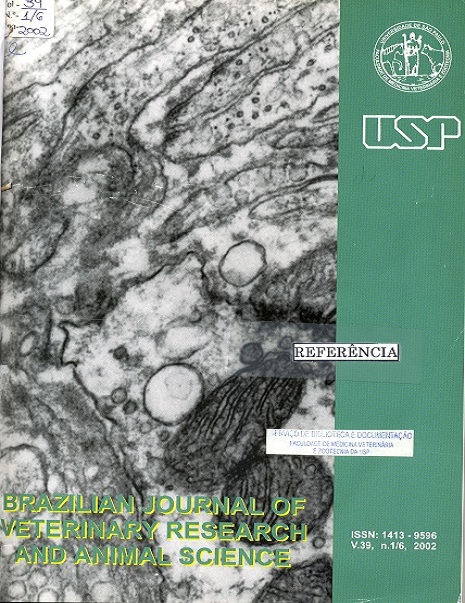Implantation of two biological membranes in a corneal micropocket as an experimental model for angiogenesis
DOI:
https://doi.org/10.1590/S1413-95962002000400005Keywords:
Angiogenesis, Cornea, Biological membranes, Experimental model, RatAbstract
Angiogenesis has been known to participate in several physiological and pathological processes. Experimental models have been utilized to demonstrate its importance. The aim of this study was to establish an angiogenesis model using two biological membranes (pericardium and amniotic membrane) preserved in glycerin. The membranes were implanted in a micropocket in the cornea of 63 rats. The pericardium was implanted into the right cornea and the amniotic into the left cornea of the same animal. The rats were sacrificed at 1, 3, 7, 15, 30 and 60 days after the surgical procedure and the specimens underwent histology examination. Although the pericardium was more effective to induce angiogenesis and for a long period of time when compared to the amniotic membrane, both membranes can be used as an angiogenesis model.Downloads
Download data is not yet available.
Downloads
Published
2002-01-01
Issue
Section
UNDEFINIED
License
The journal content is authorized under the Creative Commons BY-NC-SA license (summary of the license: https://
How to Cite
1.
Safatle A de MV, Barros PS de M, Malucelli BE, Guerra JL. Implantation of two biological membranes in a corneal micropocket as an experimental model for angiogenesis. Braz. J. Vet. Res. Anim. Sci. [Internet]. 2002 Jan. 1 [cited 2024 Nov. 12];39(4):189-95. Available from: https://revistas.usp.br/bjvras/article/view/5965





